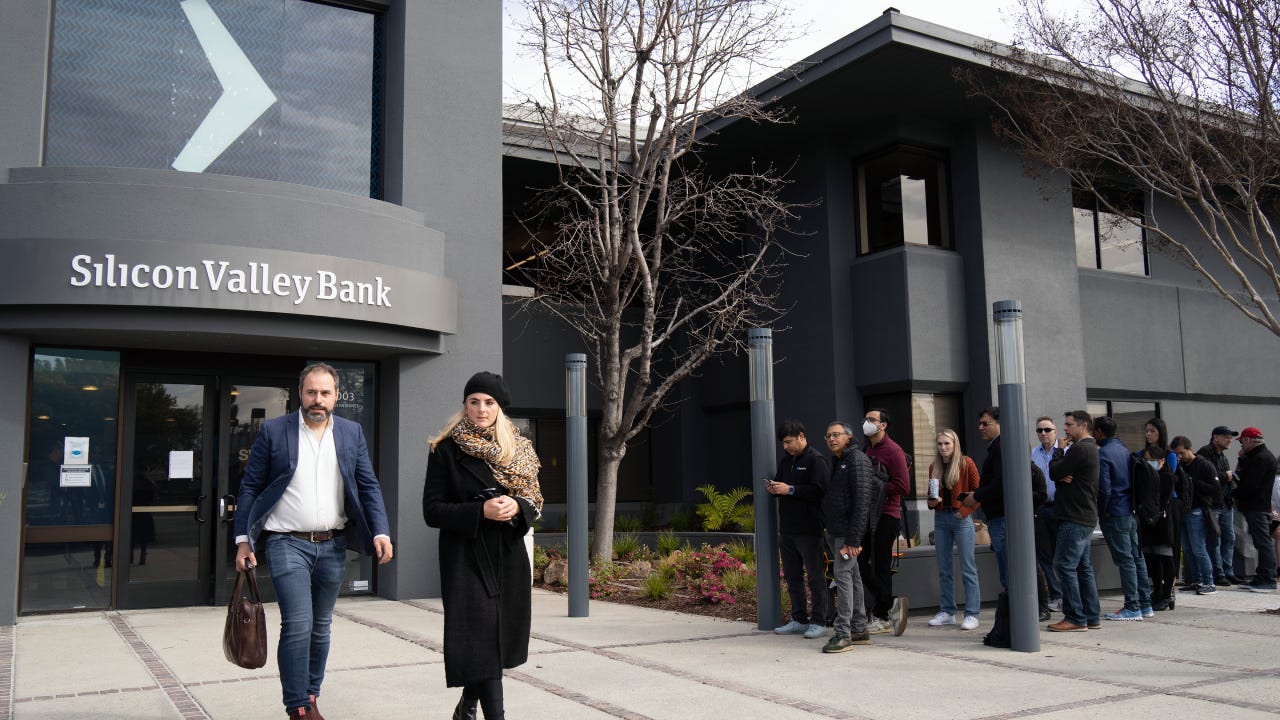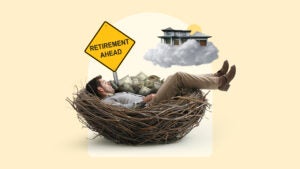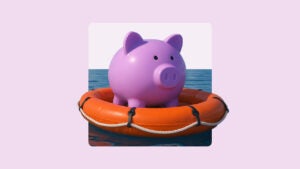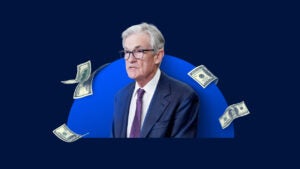Survey: Recession odds for 2023 hover at 64% amid bank failures and higher rates

The U.S. economy started the year off on a better foot than expected, but the chances of a recession are still high, according to Bankrate’s quarterly survey of economists.
The financial system has a 64 percent chance of contracting by the end of 2023, according to experts’ average forecast. Those odds remained the same from the prior survey period, even as businesses massively ramped up hiring since the last iteration of Bankrate’s Economic Indicator survey.
Predictions ranged from as high as 95 percent to a low of 30 percent. Just 18 percent of economists said the chances of a downturn were below 50 percent, while nearly half (or 47 percent) put the odds at 70 percent or higher. The forecasts signal that the odds of a recession are more probable than not.
Economists, however, indicated the U.S. economy’s surprising strength might be part of the problem. The Federal Reserve is now preparing to keep rates higher for longer to cure more stubborn inflation. That more restrictive policy is expected to weigh on growth and spending — and with the recent failure of two prominent regional banks thrown into the mix, none of it could bode well for the economy.
While the odds of a recession have been seen as elevated for many months now, recent bank failures and the related flare-up of financial system instability are widely seen as raising the economy’s downside risks.— Mark Hamrick, senior economic analyst at Bankrate
Key takeaways:
- Fed seen lifting rates two more times before cutting in 2024
- Inflation to keep decelerating this year as economy slows from high interest rates
- Odds of a recession in 2023 hover at 64% amid bank failures and higher rates
- Economists see jump in unemployment and major job losses over next 12 months
The U.S. economy looked stronger than expected in early 2023 — but then two bank failures spoiled the party
If the U.S. economy were to enter a recession, it’d likely be one of the most predicted downturns in history. Last July, experts penciled in a 52 percent chance of a downturn, while those odds surged to 65 percent by October 2022.
That’s likely because experts are using history as a guide. The last time the Fed raised interest rates this quickly, joblessness surged to nearly 11 percent, while the financial system entered the worst recession since the Great Depression.
The downturn, however, looks like it’s yet to arrive. Since the Fed’s first rate hike in March 2022, employers have added 4.3 million new jobs. Unemployment in January, meanwhile, hit a fresh half-century low of 3.4 percent. Businesses have a near record number of job openings, while the number of vacant positions outnumbers those who are unemployed by almost 1.7 to 1. Those recession odds have stalled out ever since in Bankrate’s subsequent Economic Indicator polls.
“Predictions for recession have underestimated job growth and consumer spending for months,” says Robert Frick, corporate economist at the Navy Federal Credit Union, who is forecasting a 50 percent chance of a recession. “Given jobs growth is still strong and inflation is falling, consumer spending power will strengthen, making odds of recession this year a coin toss.”
Predicting recessions is as complicated as predicting the weather, but the delayed timing doesn’t mean a downturn might not come to crash the party eventually. When the Fed pushed interest rates to a record high of 19-20 percent in December 1980, joblessness remained relatively stable — until July 1981, that is, when it began a 17-month surge. Higher rates hit the economy with a lag, meaning it often takes a full year per each rate hike to impact the financial system.
The failures of Silicon Valley Bank and Signature Bank — in part related to the rapid run up in interest rates – suggests monetary policy is starting to crack down on the overheated economy. Some economists remain optimistic that the banking turmoil is contained, especially after regulators moved quickly to backstop uninsured deposits and give capital to banks.
“The risk of recession in the U.S. remains uncomfortably high, and the recent turmoil in the banking sector only amplifies those risks,” says Dante DeAntonio, director of economic research at Moody’s Analytics. “However, I still do not expect a recession to begin in 2023.”
Yet, regional banks are projected to tighten the belt on lending to maintain enough cash to cover their depositors’ needs. Fed officials admitted in their post-meeting statement from March that they don’t yet know the full extent of the impact. All the while, inflation remains hot, and price pressures showed signs that they’re moving in the wrong direction in February, after prices excluding food and energy heated up from the prior month.
“Too high inflation — stubborn. The need to raise rates more. A tight jobs market. A banking sector with problems. What more could you want?” says Robert Brusca, chief economist at Fact and Opinion Economics. “Houdini could not negotiate this without crashing.”
Hear from the experts
If we go into a recession, it is not likely to happen before the late fall or early winter. The recent events in the financial sector are not major as most banks are solid and didn’t decide that having a balance sheet that looks like savings and loans makes sense. The issue is inflation and will be the issue for the next two to three years. The Fed has to squeeze it out and a soft landing is a nice thought but not as important as lower inflation.
— Joel Naroff, chief economist at Naroff Economics
Slowing labor market conditions and high interest rates are expected to push the economy into a mild to moderate slowdown over the next year. Economic resilience, especially from the consumer, has pushed out recession expectations. The expectation is for the recession to be Federal Reserve induced, which is an easier recession to recover from than a balance sheet recession, which is not in the forecast.
— Yelena Maleyev, economist at KPMG
We expect a recession in 2023, and while incoming data for the first quarter have shown a resilient economy thus far, there have been signs of slowing activity. Coupled with the likelihood of tighter financial conditions brought about by developments in the banking sector, economic activity will likely slow sharply over the next few quarters.
— Mike Fratantoni, chief economist at the Mortgage Bankers Association
-
The First-Quarter 2022 Bankrate Economic Indicator Survey of economists was conducted March 23-30. Survey requests were emailed to economists nationwide, and responses were submitted voluntarily online. Responding were: Odeta Kushi, deputy chief economist, First American Financial Corporation; Yelena Maleyev, economist, KPMG; Scott Anderson, chief economist, Bank of the West; Nayantara Hensel, Ph.D., chief economist, Seaborne Defense; Joel L. Naroff, Naroff Economics; Mike Fratantoni, chief economist, Mortgage Bankers Association; Robert Frick, corporate economist, Navy Federal Credit Union; John E. Silvia, CEO and founder, Dynamic Economic Strategy; Dante DeAntonio, director of economic research, Moody’s Analytics; Bernard Markstein, president and chief economist, Markstein Advisors; Lawrence Yun, chief economist, National Association of Realtors; Robert Brusca, chief economist, Fact and Opinion Economics; Bill Dunkelberg, chief economist, NFIB; Gregory Daco, chief economist, EY; Lindsey Piegza, Ph.D., chief economist, Stifel; Eugenio J. Alemán, Ph.D., chief economist, Raymond James Financial; and Mike Englund, chief economist, Action Economics.
Why we ask for feedback Your feedback helps us improve our content and services. It takes less than a minute to complete.
Your responses are anonymous and will only be used for improving our website.
You may also like

Gen Z wants to retire early, but are they being realistic?





